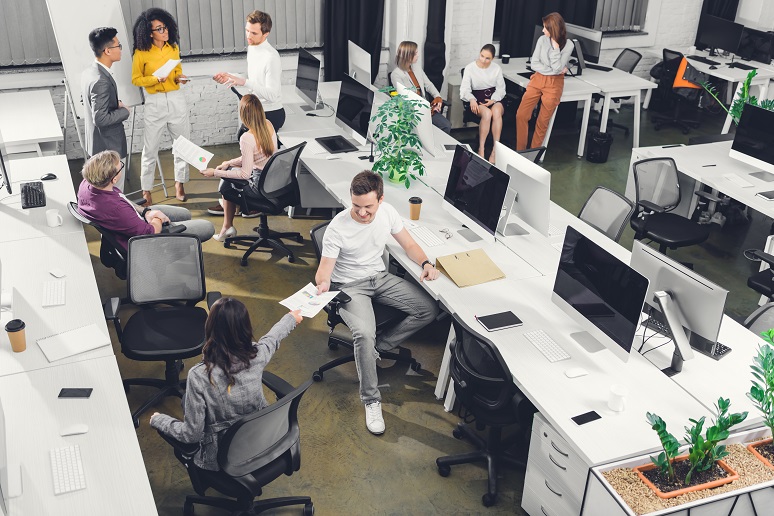Recalling back a few years to a San Francisco business trip, I think about the rising tech company we stopped by for a visit. We got the requisite tour, of course… a firsthand look at the perk-filled life of the in-demand coders and engineering whizzes making Silicon Valley dreams a reality. But what really struck me was this company’s workspace — a spacious open office, filled with row after row of benched desks. That was something I hadn’t seen, in quite that magnitude, until then.
I have to confess, my blood ran a bit cold. An open office filled with cubicles is one thing, but this design is something altogether different. Though many thrive in workspaces of this sort — highly collaborative, for the right people — I doubted I could ever be one of them.
Now I think back on that space and wonder what’s become of it. Even companies that reaped big value from the free-flowing collaboration and resulting innovation touted of such spaces, I can’t imagine the row upon row of benched desks is much of a perk for workers any longer or part of an office space reimagined for post-pandemic occupancy. Nope, definitely not, as Meredith Zenkel, VP of marketing and communications at office furniture maker Poppin, shared last week during a “
Designing for the Hybrid Workforce” podcast that took place during Flex Summit 2021 hosted by cloud communications provider
Fuze.
Poppin clients embracing the hybrid work model see the office as the “work zone for community and collaboration-based activities,” and as such the company is beginning to see a bump in sales for lounge and other furniture suited to that, Zenkel said. Clients planning for full-time occupancy, however, are placing their investments in employee health and safety, “specifically in creating psychological comfort by better defining personal space,” she said.
And that goal directly impacts benched open offices, Zenkel said.
Before the pandemic, “everyone benched desks and tried to squeeze as many people per square foot as possible. Now people are breaking up those same benching systems to give people a sense of the space they've become so accustomed to over the last year, and then providing the literal division,” she explained. For example, she added, Poppin is seeing sales of its protective acrylic shields, privacy panels for desks, and air filtration systems (it carries HEPA filters by Medify), as well as interest in individual spaces and small group spaces set up for teleconferencing. For those latter needs, the company offers the
PoppinPod and its newest product,
PoppinSpaces, for creating separation in open offices via non-architectural walls.
Whether in a hybrid model or otherwise, choice is of utmost importance for the future of the office. While an open floor plan with benched desks may not have been everybody’s ideal work environment, Zenkel pointed out this truth that many seem to want to ignore as they think about the future of where they work: “Human beings need in-person interactions to stay engaged, happy, connected, sane. Hardly leaving your home is not particularly conducive to creative thinking.”
Sharing her own experience, she continued: “Living and working in New York City, I know just ... on my commute to work, I would see subway ads and different things that would give me ideas and inspiration. You don't really necessarily have that when you're home all day. I also don't think we can underestimate the value of just the shared experience, which really requires us being in the same place. Being physically together allows for deeper connections and sense of community.”
Now, if we can enhance open floor plans with spaces that allow for focused work and a respite from distractions, we’ll be the better for it. “A blended mix makes most sense for almost everyone,” Zenkel said. Sounds good to me.







